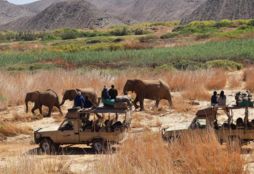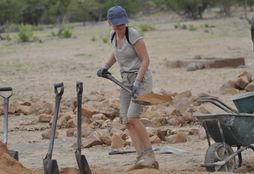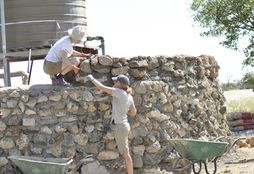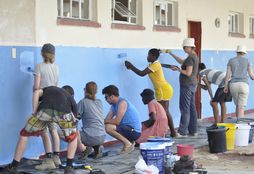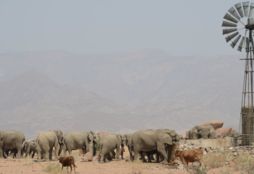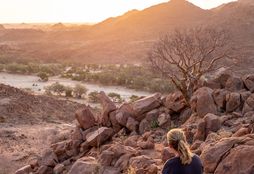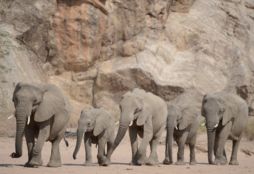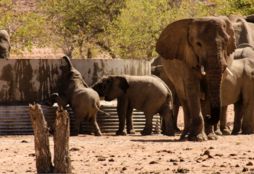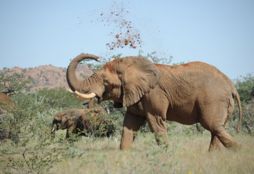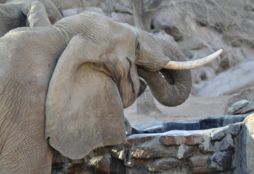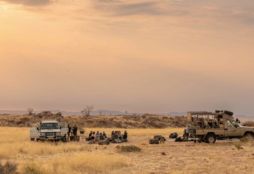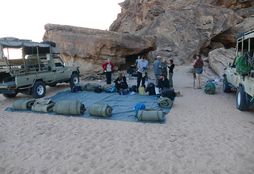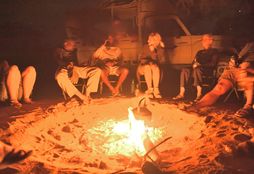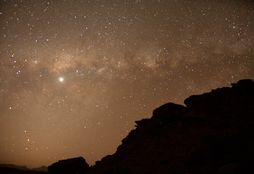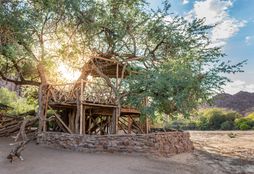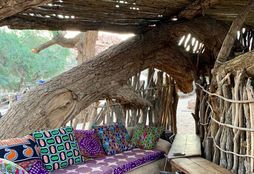Highlights
- Fight the eradication of the free-roaming desert elephant population in Namibia.
- Provide immediate and practical solutions to combat elephant-human conflict that exists due to a battle for resources.
- Participate in hands-on conservation by building walls and structures designed to allow elephants to access water-points without damaging them.
- Take part in tracking, monitoring, and documenting important updates to the elephants’ behavioural and movement patterns.
- Create a difference in the lives of local communities and Namibia’s free-roaming desert elephants.
- Sleep under the stars - experience a true wild camping experience.
Project information
Volunteers will be given a unique opportunity to see some amazing wildlife. Damaraland is vast, scarcely populated communal trust land. As it is a transitional zone between the high rainfall area in the east and the Skeleton Coast in the west, it is regarded as un-farmable on a commercial basis. Therefore, it has become a natural, unfenced refuge for desert-adapted animals such as the black rhino, desert-adapted lion, oryx antelope, kudu, Namaqua chameleon, desert giraffe, brown and spotted hyena, ostrich, springbok, steenbok, black-backed jackal, cheetah, leopard and many more!
Programme details
In desperate search for water, elephants frequently destroy water pipes or spear their tusks through water tanks to provide water for their herd. The project tries to tackle the issue by providing the construction of protective walls, which still give access to water to the wildlife and livestock in the area but keep the populations' windmills, water storage tanks and pumps safe from destruction.
Volunteers can experience hands-on conservation and have a direct impact on fostering a peaceful relationship between elephants and humans, thereby securing their continued existence. Since the project started in 2003, over 220 protection walls have been successfully constructed with the help of over 3,500 volunteers.
The Elephant Conservation Project requires a minimum of two weeks’ commitment and the project is split into two parts:
Your role
Week One: Build Week
Spend your time on the construction of protective walls around famers’ and communities’ water pumps, tanks and windmills. With a large group of volunteers, we can complete one wall in two trips. This will allow the elephants as well as other animals to safely access water without damaging the infrastructure. It’s a labour-intensive week and can be physically challenging, but nobody is ever expected to do more than they are able. Working is done in a team and the tasks will be split up between everyone. Tasks can include things like the ‘rock run’ to collect rocks and sand, collecting water from a nearby water source, mixing cement and the actual construction of walls.
Week Two: Patrol Week
The second week is then spent on patrol. You will track the different elephant herds to build up a database of their movements. This allows the project team to effectively plan where to focus the attention of the water-point protection work, based on the likely locations of the herds. Visits to the affected farmers will also be made to assess the risk of elephant-human conflict which may arise.
It is also essential to record the health of the herd, recording new births, deaths, and injuries and capturing photos for the database. The project provides the government with accurate information on the desert elephants and keeps track of population trends.
Accommodation
Your first and final nights in Swakopmund are spent in a comfortable dormitory room in a laid-back hostel. Single room upgrades are available upon request.
At the Project base camp everyone sleeps in a large tree platform! There are also showers and long-drop toilets there.
You will leave base camp and camp in the African wilderness for the duration of your time on each project. There are no washing facilities on either build or patrol weeks, but you can enjoy a shower at the base camp between the two weeks.
Tents can be provided; alternatively, everyone sleeps on bedrolls/mattresses on a large tarpaulin under the stars. As the camp in "build week" is in the same spot for the duration of the build project, a private long-drop style toilet may be set up. If there is enough water available, a basic shower at the build project camp might also be set up.
Patrol week is a true wild camping experience.
Except for the meals in Swakopmund, three daily meals are provided. All cooking is done over the fire and you will work in groups taking turns to be on kitchen duty, which includes providing ‘coffee in bed’ in the mornings, breakfast, lunch and dinner.

